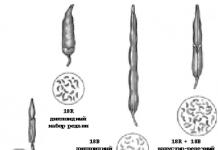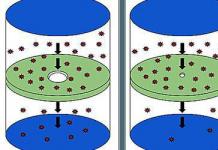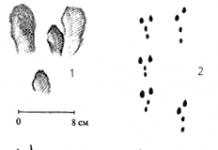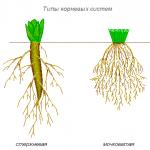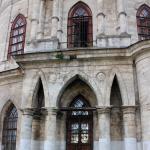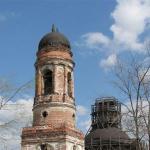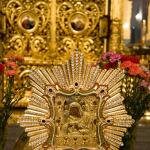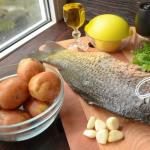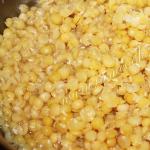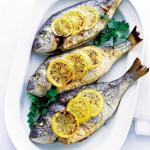To the question: how do mushrooms breathe? given by the author Nolina Polonitskaya the best answer is gills, some breathe atmospheric air, which is processed in the intestines (speckled catfish), and some with a special labyrinth (cockerels, gourami, lalius, macropods) Oh, I read FISH!!)))
This mushroom is familiar to everyone. Its fruiting bodies - dark “hooves” with a cherry stripe along the edge - dot birch trunks in the forests of the middle zone. They are called fruiting bodies because spores ripen in these hoof growths, which are then carried by the wind. And the main part of the mushroom, its mycelium, is located deep in the trunk. It is in the mycelium cells that the main life processes occur, including the breakdown of wood biopolymers.
The tinder fungus processes wood into water and carbon dioxide. But this requires oxygen. And wood and dense birch bark practically do not allow air to pass through. How does oxygen get inside the tree? Biologists from the Institute of Plant and Animal Ecology of the Ural Branch of the Russian Academy of Sciences and the Institute of Plant Physiology determined this experimentally.
To find out how the bordered tinder fungus manages to actively breathe under the impenetrable armor of birch bark, the researchers placed in the experimental chamber in turn: a fragment of a trunk with a fruiting body-hoof, a fragment of a trunk without it, and a fruiting body separated from the tree. To understand which of the objects was breathing, biologists recorded the carbon dioxide content in the chamber. It turned out that a fragment of a trunk without a fruiting body, but with mycelium inside, practically does not emit carbon dioxide. Breathing occurs only in the presence of the “hoof.”
It turns out that the bordered tinder fungus breathes through the fruiting body, which can be called a mushroom “lung”. It is the fruiting body, or rather its spongy part - the hymenophore, that absorbs oxygen, oxidizes carbohydrates, releases carbon dioxide and synthesizes energy molecules ATP and NADP, which it sends to the mycelium. The water necessary for the needs of the fungus is also formed here. And in the mycelium cells sitting in the tree trunk, the wood is only partially split. The products of this breakdown go into the fruiting body, where their complete and final oxidation occurs.
The result of such a complex and interesting biological process for the tree is disappointing - it is destroyed at the root. But what can you do - each parasite in nature has its own job. This phenomenon, called cooperative respiration, was discovered by scientists for the first time in tree fungi. But books on gardening have long recommended knocking down growing tinder fungi from tree trunks. It turns out not in vain, this is a way to cut off oxygen to the mushroom. Previously, it was believed that these were simply reproductive organs. Now we know that tree fungus also breathes with them.
About what mushrooms living on trees breathe and how this is possible ^72; breathe the reproductive organs, the editor-in-chief of the magazine “Chemistry and Life” Lyubov Strelnikova and Sergey Katasonov told you.
Answer from Adaptability[newbie]
Oxygen
Answer from Arkady Dyachkov[newbie]
absorbs oxygen
Answer from Neurologist[guru]
Mushrooms breathe oxygen. Only yeast fungi are able to assimilate organic substances through glycolysis (without access to oxygen)
Answer from Landrail[guru]
Mushrooms, like all living organisms, breathe in order to obtain the energy necessary for life. Fungi have two types of respiration, some of them are aerobes, others are anaerobes.
Aerobes are living organisms that use oxygen for respiration. Anaerobes are living organisms that do not use oxygen for respiration. Anaerobes include yeast, and aerobes include all other mushrooms, for example cap mushrooms: russula, boletus, chanterelle and others.
Anaerobic respiration occurs in the cytoplasm. As a result, the glucose molecule is broken down to form two molecules of pyruvate. This process is called glycolysis. It produces two molecules of an energy-rich substance - ATP. Glycolysis reactions occur in the cells of both anaerobic and aerobic organisms. Pyruvate can then be converted into lactic acid or ethyl alcohol. Depending on this, lactic acid or alcoholic fermentation is distinguished. Anaerobic respiration of yeast is an example of alcoholic fermentation. In aerobes, pyruvate is further broken down into carbon dioxide and water with the participation of oxygen, resulting in the formation of 36 ATP molecules. Aerobic respiration occurs in mitochondria - cellular organelles, 0.2–7 microns in size, having a double membrane.
Slide 1
Lesson topic
Respiration of plants, bacteria and fungi
Slide 2

"photosynthesis", "nutrition"
Slide 3

Why is oxygen needed?
Slide 4

Problem. Why did the mouse die in Priestley's experiments?
What do we need to do to solve this problem? find out what breathing is, what is needed for breathing, what is formed during the breathing process, what caused the death of the mouse.
Slide 5

Breathing process
1.Stage - gas exchange 2.Stage - cellular respiration (splitting of organic substances under the influence of oxygen into water, carbon dioxide and release of energy)
Slide 6

Slide 7

Experience of J. Priestley
Slide 8

A mind is good, but two are better. group work
Group 1 - What happened? What can be concluded? Group 2 - Who is right in this case? Why did the rich lady have a headache? Group 3 - Why?
Slide 9

Biological research
Prove that in the dark plants release only oxygen?
Slide 10

Need a solution
-Do all plant organs breathe? -What determines the intensity of the breathing process?
Slide 11

Slide 12

Comparison of the processes of photosynthesis and respiration. (table)
1. In what cells does it occur?
2. What gas is absorbed?
3. What gas is released?
4. What time of day does it happen?
5. What happens to organic substances?
6. Energy?
Slide 13

Peer review
Features of the process Photosynthesis Respiration
1. In what cells does it occur? In cells containing chloroplasts In all plant cells
2. What gas is absorbed? Carbon dioxide Oxygen
3. What gas is released? Oxygen Carbon dioxide
4. What time of day does it happen? During the day Around the clock
5. What happens to organic matter? Formed Oxidize (decay)
6. Energy? Accumulates Released
Slide 14

They were the first on planet Earth
Slide 15

Bacterial respiration methods
Aerobic – oxygen consumption for the decomposition of organic matter. Anaerobic - respiration in an oxygen-free environment. Fermentation is the decomposition of complex organic substances without the consumption of oxygen. Types of fermentation: Alcoholic, lactic, butyric.
Slide 16

Breath of mushrooms
Aerobic Anaerobic
Slide 17

Breath. Complex organic substances + oxygen = carbon dioxide + water + E Fermentation. Complex organic substances = alcohol, lactic acid + E
Slide 18

Biology:
History: the breath of antiquity - looking at the monuments of the past. Literature: the breath of an era - when any time is described. Social studies: the breath of modernity - the results will be known through a social survey. Geography: breath of the wind - the wind blew quietly; breathing of a volcano - the volcano began to “come to life”; The icy breath of winter. Mathematics: breathing amplitude – graphical representation.
Slide 19

Breathing – ………
respiration and photosynthesis are two opposite processes, the supply of oxygen, the release of carbon dioxide, the process occurs in all cells continuously - both day and night, the process of energy release, it is released in small portions and the cell does not overheat
Slide 20

Solve the statements. (put plus or minus)
1.Breathing occurs only in the light. 2.In the process of breathing, oxygen is absorbed and carbon dioxide is released. 3.When breathing, oxygen is consumed significantly less than it is formed during photosynthesis. 4. Anaerobes are organisms that require oxygen. 5. Aerobes are organisms that do not require oxygen. 6. During alcoholic fermentation, sugar breaks down into alcohol. 7.Lactic acid bacteria convert milk into yogurt, kefir and other dairy products. 8. Yeast ferments, decomposing into alcohol and carbon dioxide. 9. Carbon dioxide makes bread porous and light. 10. Amanita, an anaerobe mushroom.
Slide 21

Check the statements
1.Breathing occurs only in the light. (-) 2. During the process of breathing, oxygen is absorbed and carbon dioxide is released. (+) 3. During respiration, oxygen is consumed significantly less than it is formed during photosynthesis. (+) 4. Anaerobes are organisms that require oxygen. (-) 5. Aerobes are organisms that do not require oxygen. (-) 6. During alcoholic fermentation, sugar breaks down into alcohol (+) 7. Lactic acid bacteria convert milk into curdled milk, kefir and other dairy products. (+) 8. Yeast ferments, decomposing into alcohol and carbon dioxide. (+) 9. Carbon dioxide makes bread porous and light. (+) 10. Amanita, an anaerobe mushroom. (-)
Slide 22

Carl Linnaeus “The order of mushrooms is chaos...” He classified mushrooms as plants and identified 12 genera of 95 species.
18 century. Taxonomy:
Christian Heinrich Person.
Elias Magnus Fries
Andreo Saccardo.
Ontogenetic methods of mycology:
Anton De Bary
Louis Rene Tuklian
Arthur Arturovich Yachevsky
Mikhail Stepanovich Voronin.
Practical direction in biology:
Naumov Nikolay Alexandrovich
Bondartsev Appolinary Semenovich
Khokhryakov Mikhail Kuzmich
Kursanov Lev Ivanovich
Origin.
It is believed that the main trophic groups of fungi were formed in the Early Precambrian. Fungi, as the third trunk of eukaryotes, formed independently of plants and animals, in the Paleozoic era during an evolutionary leap, the formation of vascular plants. Fungi came to land along with plants, they founded associations with coastal algae, and since in Selur the conditions for terrestrial existence were quite hard, then access to land separately for plants and animals is doubtful.
Oomycetes, zygomycetes, ascomycetes, plus heteromycetes came out of the water. And Basedia mycetes owe their origin to dry land, only under the cover of plant tissue. Mushrooms began to be considered as a separate kingdom relatively recently, with the works of Kartodjian, Whittaker, and Morgulis.
The modern classification of fungi is based on the presence or absence of flagella in the cycle, as well as in the composition of the cell wall. Therefore, the traditional idea has undergone changes and three kingdoms are distinguished:
1.Protozoa
A) Slime molds
B) Plasmodiophorans
2.Chromists
A) Omycetes
A) Chytridiomycetes
B) Zygomycetes
B) Ascomycetes
D) Basidiomycetes
D) Imperfect mushrooms
E) Lichens
Cell wall: Protozoa (cellulose), Chromists, Mycota (Chitin, glucans, chitosan)
Mobile stages: Protozoa (biflagellates), Chromists (heteromorphic biflagellates), Mycota (no flagellated stages)
Fungi: heterotrophic, attached organisms with unlimited growth, reproducing and spreading by mycelium and spores, feeding osmotrophically in the cell wall containing chitin, with a reserve product of glycogen and the end product of nitrogen metabolism - urea.
Mushrooms are a group that shares similarities with animals and plants.
As in plants: Cell wall, Apical growth, formation of a central vacuole during cell aging, attached lifestyle. As in animals, there are no chloroplasts, a storage product of glycogen, chitin in the cell wall, and the final product of nitrogen metabolism is urea. Melanin synthesis in living cells. Heterotrophic method of obtaining energy. Apical cell growth, osomtrophic nutrition.
The body of the mushroom is mycelium, a system of branching tubes with apical growth and lateral mycelium. Mycelium types:
1.Rhizomycelium (slime mold)
2. Non-cellular mycelium (oomycetes)
3. Cellular mycelium (Russula)
4. Pseudomycelium.
Mycelium types:
1.Air
2. Substrate.
Modifications of mycelium:
Appressoria - blotches
Haustoria - suckers
Sclerotia are a dense interweaving of mycelium to withstand unfavorable environmental conditions. (Ergot)
Stroma is a head on a stalk in which the fruiting bodies are embedded.
Cords are parallel hyphae (conducting function)
Rhizomorphs are strands with external thickened hyphae.
Plectenchyma is a false tissue, a plexus of threads. True parenchyma is very rare in mushrooms.
Cell structure in higher fungi:
The cell membrane consists of glucans and fibrils. Plasmalemma, cytoplasm, ribosomes, not all Golgi apparatus, mitochondria with rare exceptions, vacuoles are surrounded by tonoplast and contain cell sap, lipids in the cytoplasm. The nucleus or nuclei are surrounded by 2 or more membranes, there is no cell center, and a central plate is not formed.
Mushroom nutrition.
A) Humus (Champignons)
B) Litter (coprotrophs - Dung beetle mushroom)
A) Biotrophs
B) Necrotrophs
3.Symbionts
4. Predators
5. Facultative saprotrophs (phytophthora)
Types of mycorrhizae: Ectomycorrhiza, Endomycorrhiza.
Mushroom respiration - aerobic mushrooms, with the exception of rennet fungi.
Mushroom propagation:
1.Vegetative
A) Parts of mycelium
B) Chlamydospores
B) Oidia
D) Blastospores
2.Asexual
A) Exospores (conidia, open sporulation)
B) Endospores (Zoospores, Sporangioles)
3. Sexual
A) Gametogamy
B) Gametangiogamy
B) Somatogamy
Fruiting bodies are formed only in Asco and Basidiomycetes.
Types of fruiting bodies in ascomycetes.
1.Apothecium
2.Perithecium
3. Cleistothecium.
Types of fruiting bodies in basidiomycetes:
1. Hat
2.Globular
3. Coraloids
4.Cantilever
5. Hooved
Sexual reproduction spores are formed in the fruiting bodies: Asco (inside the bag) and Basidiospores (on the basidium). The hymenium is a layer containing the basidium or ascus.
The hymenophore is the surface on which the hymenium is located.
The vegetative body of a mushroom - mycelium, or mycelium - is a system of branching threads, or hyphae, located in the substrate (soil, plant debris, wood, living plants or animals, etc.) on which the mushroom grows. Above the surface of the substrate, most mushrooms have only fruiting bodies that have a different consistency, color, shape: caps on stems, crusts, films, powdery deposits (molds), etc. They also consist of hyphae, only more tightly intertwined. The threads of the mycelium, intertwining, form false tissue, or plectenchyma. In lower fungi, hyphae do not have transverse partitions and the entire mycelium is one giant cell with many nuclei (noncellular mycelium). In higher fungi, hyphae do not have transverse partitions dividing them into individual cells, each of which contains one, two or more nuclei. Hyphae running in parallel can form so-called mycelial cords, extending (in the soil) from the fruiting bodies of cap mushrooms, or rhizomorphs - denser and thicker strands that serve for the influx of water and nutrients. Intertwined hyphae with thick shells form so-called sclerotia (round or irregularly shaped formations ranging in size from fractions of a millimeter to several tens of centimeters), designed to survive unfavorable conditions; Once in the soil under favorable conditions, sclerotia germinate, giving rise to mycelium or, in some cases, fruiting bodies. The cells of most fungi are covered with a dense membrane made of polysaccharides - cellulose and chitin. The cell wall also includes proteins, lipids, polyphosphates and other organic substances.
Reproduction in fungi can be vegetative, asexual and sexual.
Vegetative propagation is carried out by detached sections of mycelium, cell budding (in yeast), atrospores and chlamydospores. Atrospores arise as a result of the disintegration of hyphae into individual cells, each of which gives rise to a new organism. Chlamydospores are formed in the same way; they have a thicker, dense and darker shell and are able to withstand unfavorable conditions well.
Asexual reproduction occurs through the formation of spores (endo- or exogenous). Endogenous spores, characteristic of most lower fungi, are formed inside special cells - sporangia and are called sporangiospores. The spores of some lower fungi have an organ of movement - a flagellum and are capable of movement in water (zoospores). Exogenous spores (conidia) are formed on conidiophores - special outgrowths of the mycelium, usually rising vertically from the substrate. The spread of such spores occurs with a current of air after the rupture of the conidiophore membrane (or sporangium).
Sexual reproduction of fungi is carried out by the fusion of male and female reproductive cells (gametes). In some lower fungi, gametes of the same or different sizes merge (iso- or heterogamy). Sometimes oogamy occurs; in this case, female genital organs develop - oogonia and male genital organs - antheridia. In oogonia, eggs are fertilized by sperm or special outgrowths (spurs) of the antheridium, which pour their contents into the oogonia. In some fungi (zygomycetes), the male and female genital organs are outwardly indistinguishable cells located at the ends of the mycelium; The sexual process (zygogamy) consists of their fusion. The zygotes of all lower fungi remain dormant for some time; germination is preceded by reduction division.
In many higher fungi that have multicellular mycelium, sexual reproduction is carried out by the fusion of the contents of two genital organs that are different in appearance, undifferentiated into separate gametes. In some higher fungi, the typical sexual process has faded and fertilization is carried out by the fusion of ordinary vegetative cells; after the fusion of nuclei, reduction division occurs, and the resulting haploid nuclei become the nuclei of spores of sexual reproduction. This type of sexual process (somatogamy) is especially characteristic of basidiomycetes. Sexual and asexual sporulation alternate naturally in the life cycle of fungi; sexual reproduction usually completes the life cycle.
